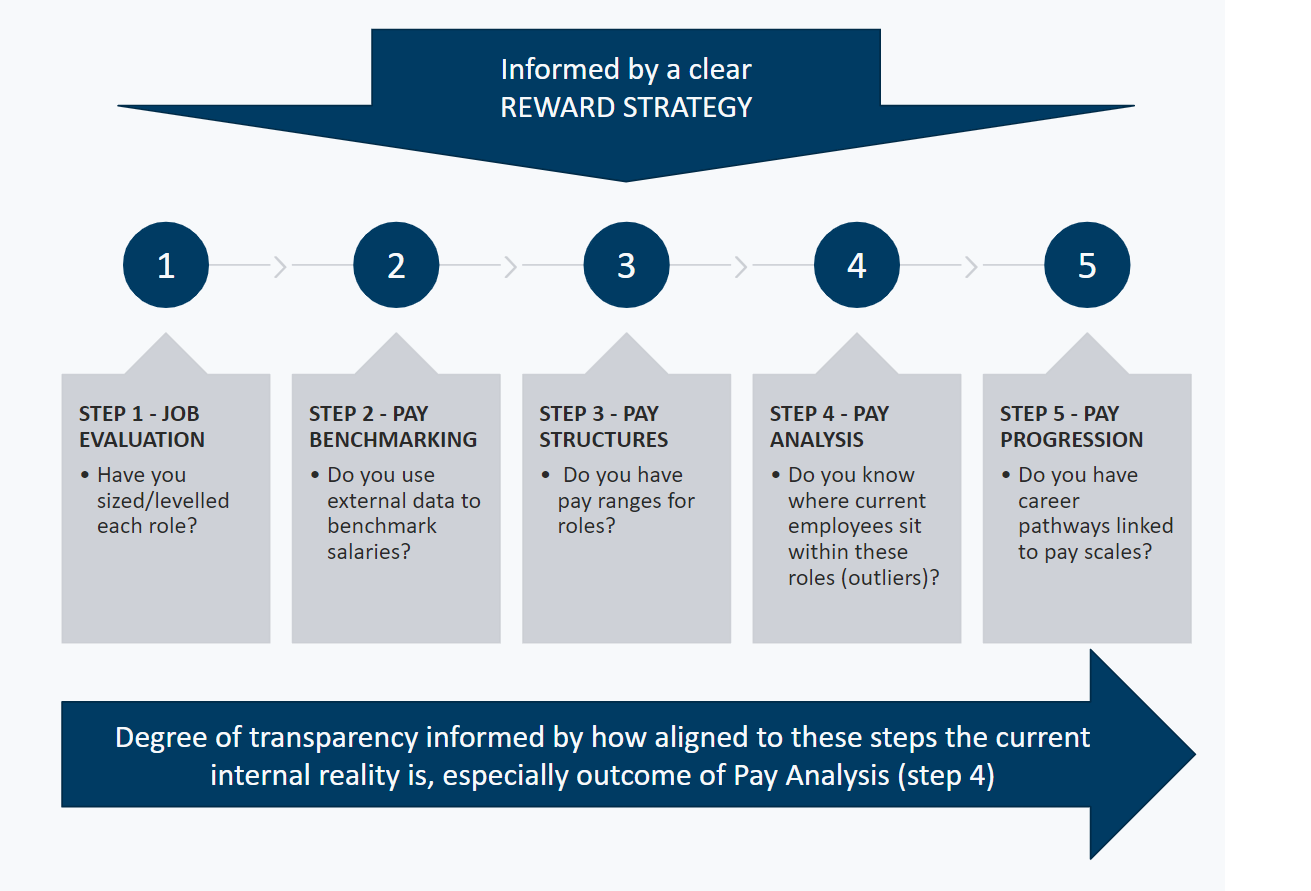Pay transparency has been a hot topic in recent years, with many organisations considering the benefits and challenges of sharing employee salary information. Proponents argue that pay transparency can improve employee engagement, reduce the gender pay gap, and increase trust in the organisation. However, some organisations are hesitant to implement pay transparency due to concerns about privacy, fairness, talent poaching, and potential negative effects on employee motivation.
In this article, I’ll explore the science of pay transparency and what UK HR leaders should consider when deciding on the level of pay transparency you want to have in your organisation.
What is pay transparency?
Pay transparency refers to the practice of sharing information about employee salaries with other employees, the public, or both. This can range from simply providing information about pay ranges or salary bands, to disclosing individual employee salaries. In some cases, organisations may even make all salary information publicly available online.
Benefits of pay transparency
The benefits of pay transparency are often cited as increased trust, fairness, and employee engagement. When employees understand how their pay is determined and how it compares to their peers, they may feel more valued and motivated.
Pay transparency can help reduce the gender pay gap, as it allows employees to identify and address any disparities in pay based on gender or other factors.
Challenges of pay transparency
Despite these potential benefits, there are also challenges associated with pay transparency.
One concern is privacy, as employees may not want their salary information to be shared with others. Additionally, there may be concerns about fairness, as some employees may feel that their pay is not commensurate with their performance or experience.
Another concern is the potential negative effect on employee motivation. Research has found that when employees perceive their pay as being lower than that of their peers, they may be less motivated and more likely to leave the organisation. Similarly, if employees perceive their pay as being higher than that of their peers, they may become complacent and less motivated to perform well.
How can you decide on the level of pay transparency that’s right for your organisation?
Fundamentally, you need to be confident that your current pay practices are fair and unbiased before implementing pay transparency. This means being crystal clear on where your outliers are, and how far they sit outside the salary you are likely to publish.
Think about the reward infrastructure in your organisation:
- Have you sized/levelled each role?
- Do you use external data to benchmark salaries?
- Do you have pay ranges for roles?
- Do you know where current employees sit within these roles (outliers)?
- Do you have career pathways linked to pay scales?

Without at least points 1-4 it is very difficult to be transparent. If you a clear idea on recommended pay for a role, but there are current incumbents spanning below, within and above this range, it is NOT a good idea to be transparent. Instead, create a plan to fix these outliers so you can gradually progress towards more transparency.
If your reward infrastructure highlights some challenges to address, start with a low level of pay transparency and gradually increase it over time. For example, an organisation might begin by sharing information about pay ranges or salary bands, and then move towards disclosing individual employee salaries once employees become more comfortable with the idea.
It’s also important to consider the level of pay transparency that’s appropriate for different roles within the organisation. For example, some organisations may choose to be more transparent about pay for entry-level positions, while being less transparent about pay for executive roles.
What are the key steps to ensuring that pay transparency is successful in your organisation?
- Conduct a pay equity analysis: Conducting a pay equity analysis will help identify any pay gaps that exist within your organisation. This analysis should be performed on a regular basis to ensure ongoing pay equity.
- Develop a pay transparency policy: Develop a policy outlining how pay transparency will be implemented in your organisation. This policy should include details about how pay information will be shared, what information will be shared, and with whom.
- Communicate the benefits of pay transparency: Ensure that employees understand the benefits of pay transparency, such as improved trust and engagement. Provide training for managers and employees to understand how to communicate about pay.
- Be prepared for difficult conversations: Pay transparency can lead to difficult conversations, such as questions about why some employees are paid more than others. Be prepared to have these conversations in a constructive manner.
- Ensure consistency in pay practices: Make sure that pay decisions are made consistently across the organisation and that all employees are treated fairly.
- Consider the impact of transparency on recruitment and retention: Pay transparency may impact recruitment and retention of employees. Be prepared to address questions from candidates about pay and to ensure that your organisation’s pay practices are competitive.
- Monitor the effectiveness of pay transparency: Regularly monitor the effectiveness of pay transparency in your organisation to ensure that it is achieving the desired outcomes.
Conclusion
It has never been more important to sort out your reward infrastructure to enable you to be more transparent with employees about pay. The trend is moving towards greater transparency anyway, and with the talent market being more challenging than ever, the ROI is self-evident.
If you don’t know where to start, I can help. While the devil is always in the detail, the steps to follow are very straightforward.



